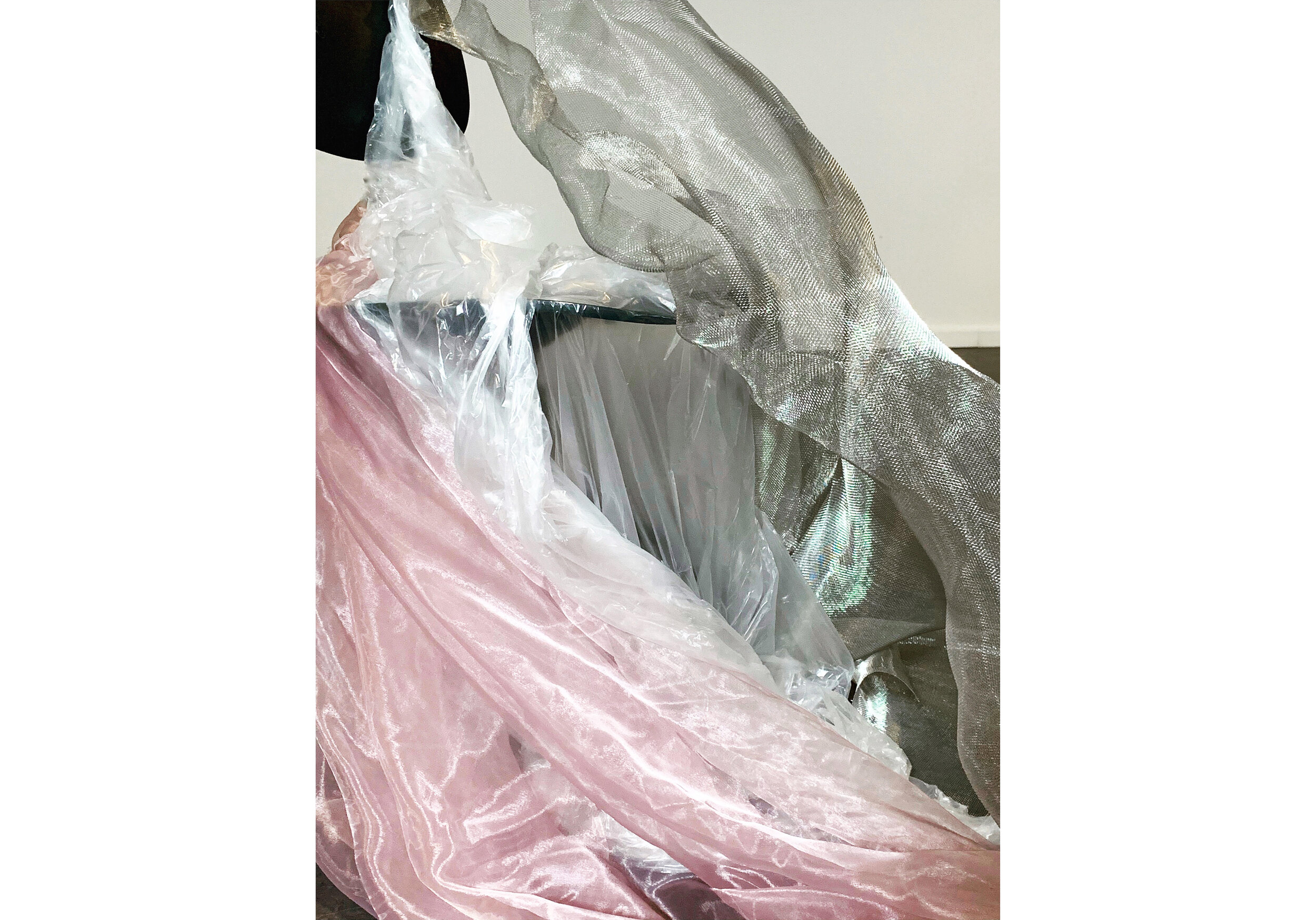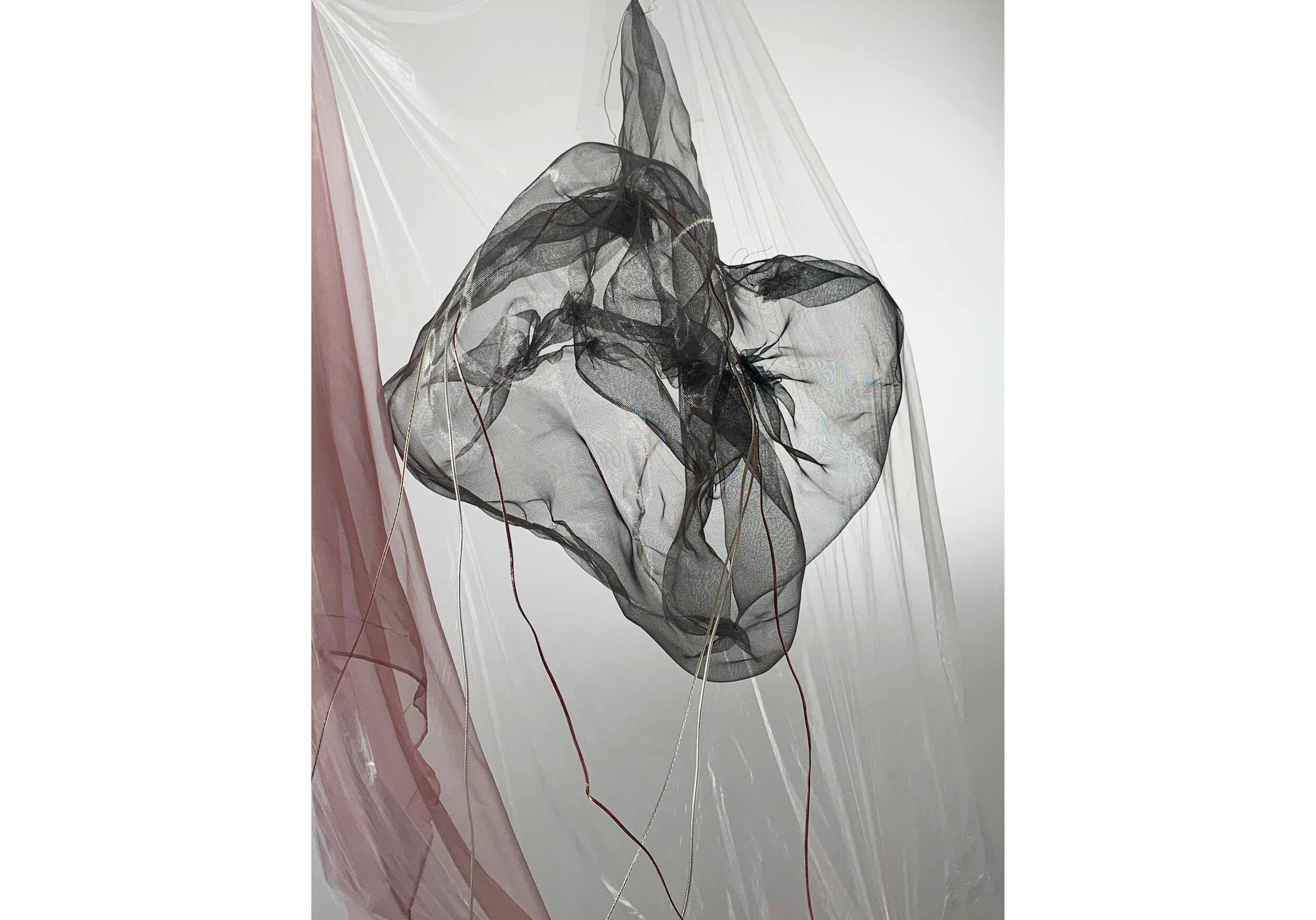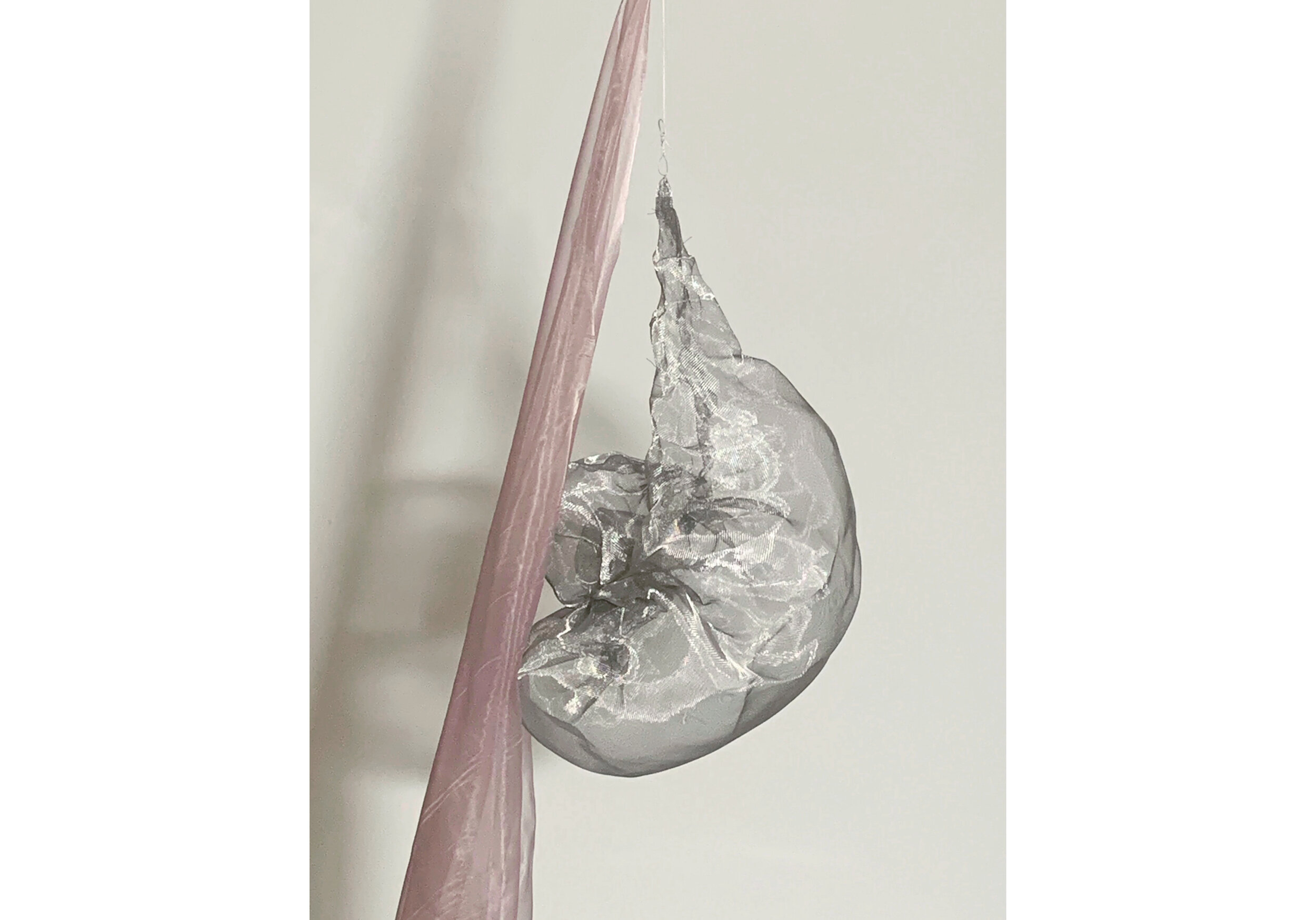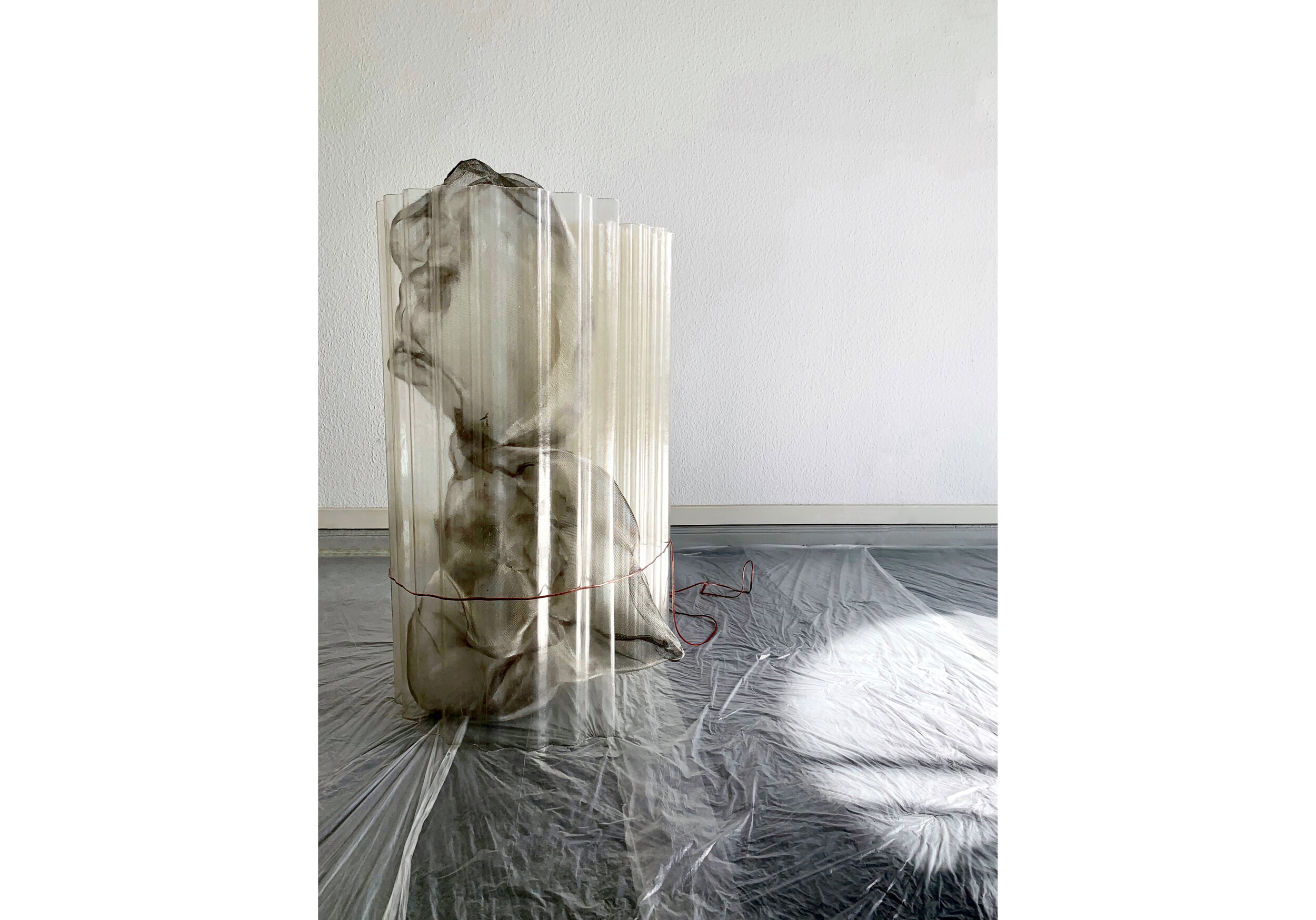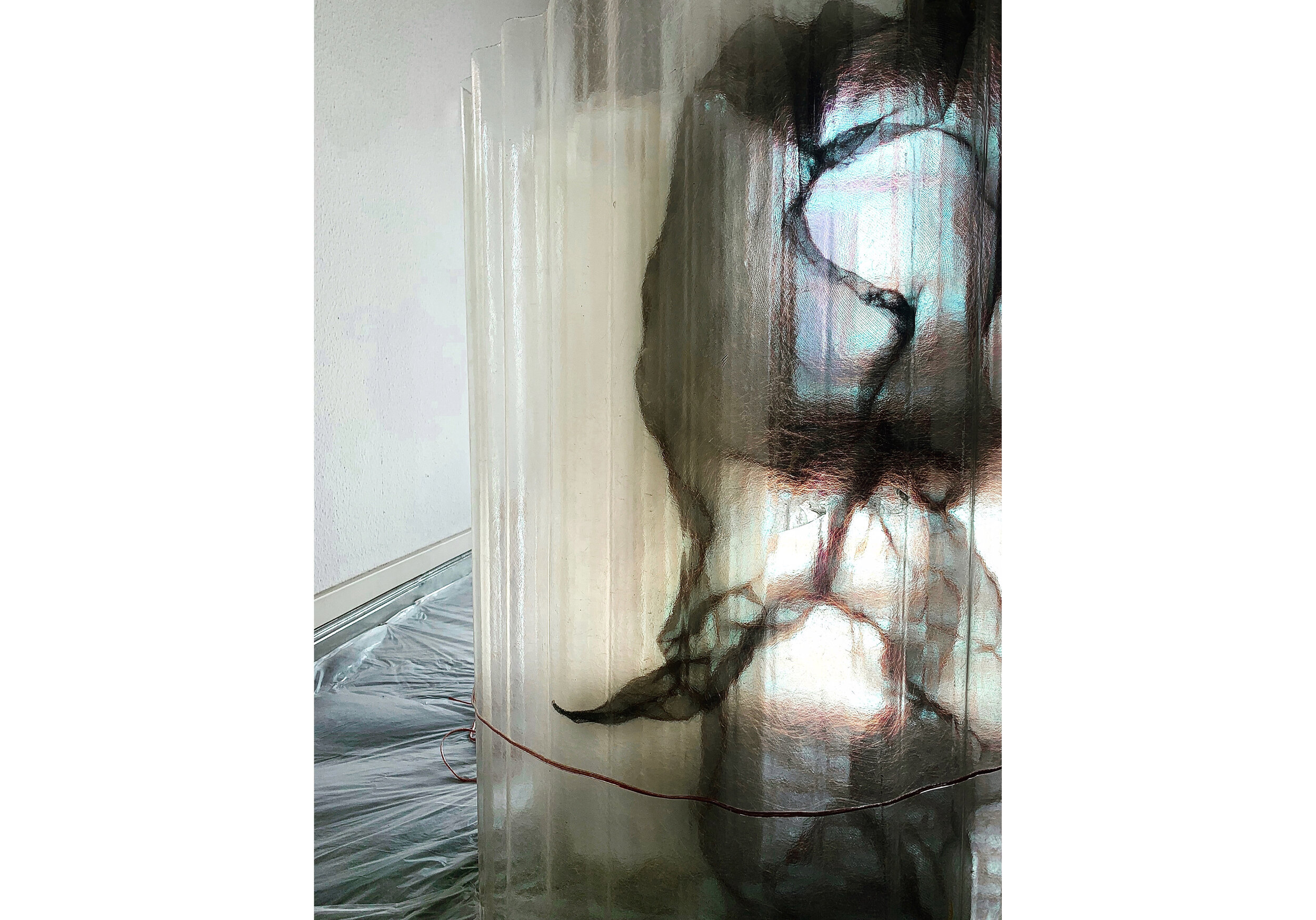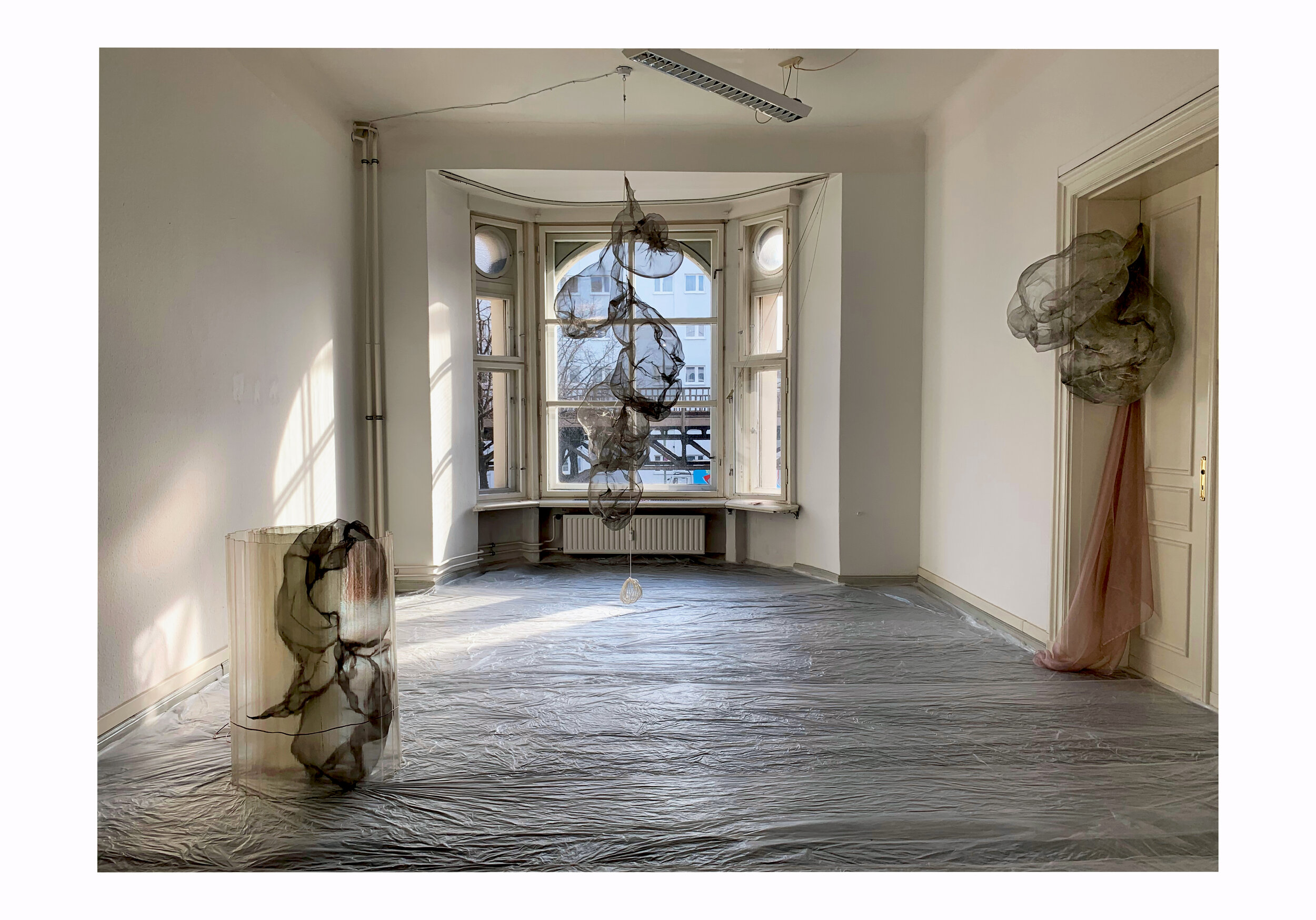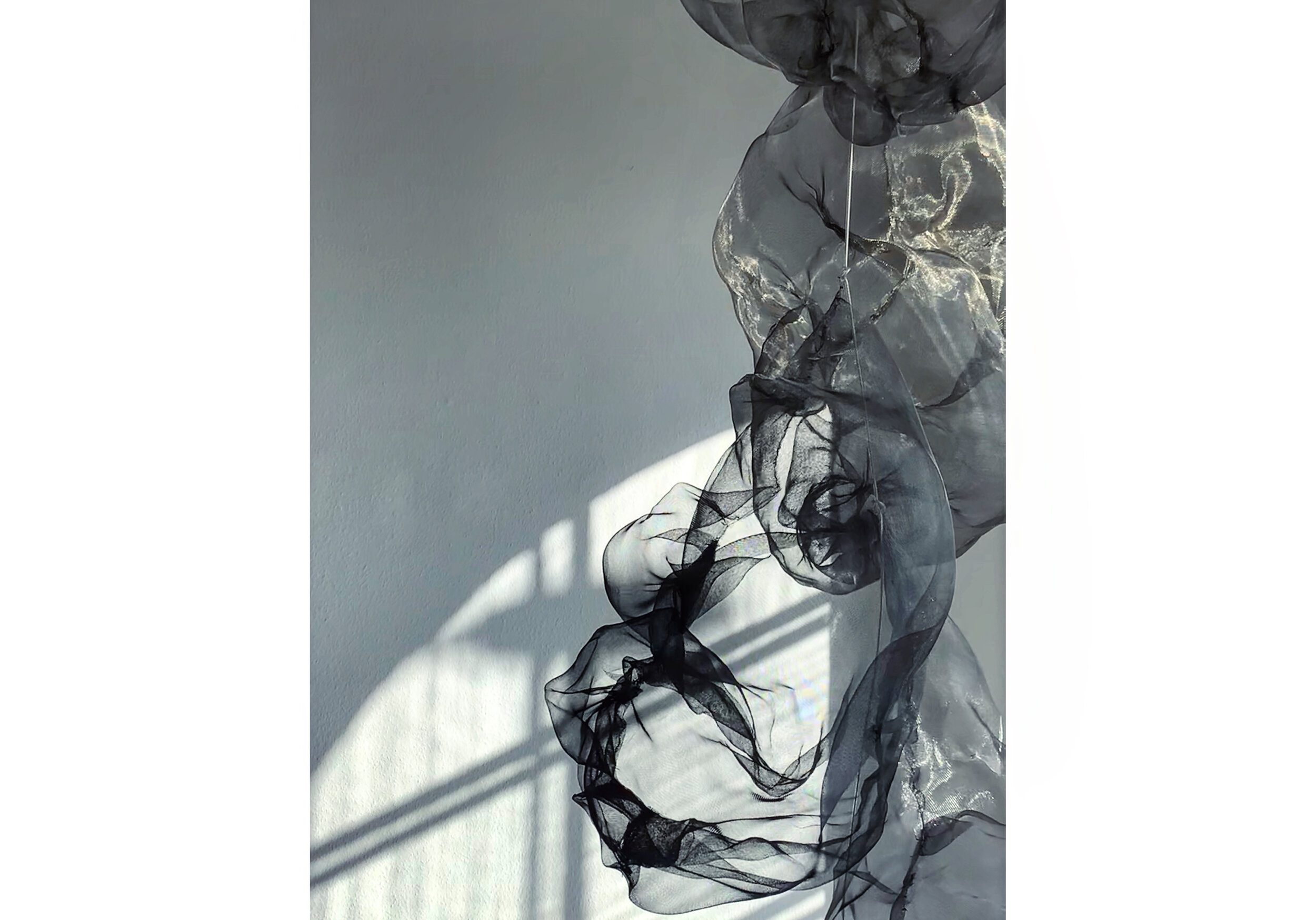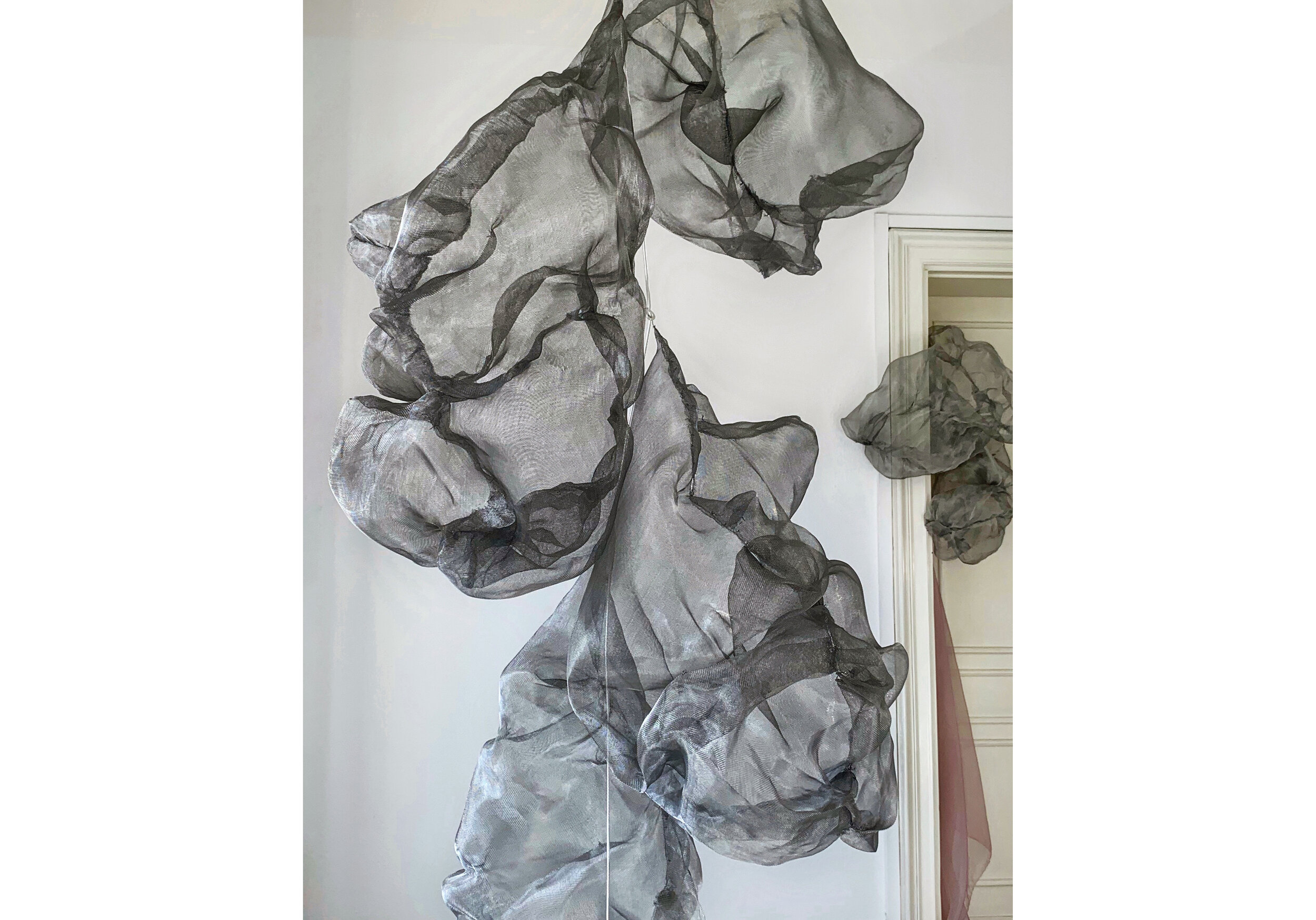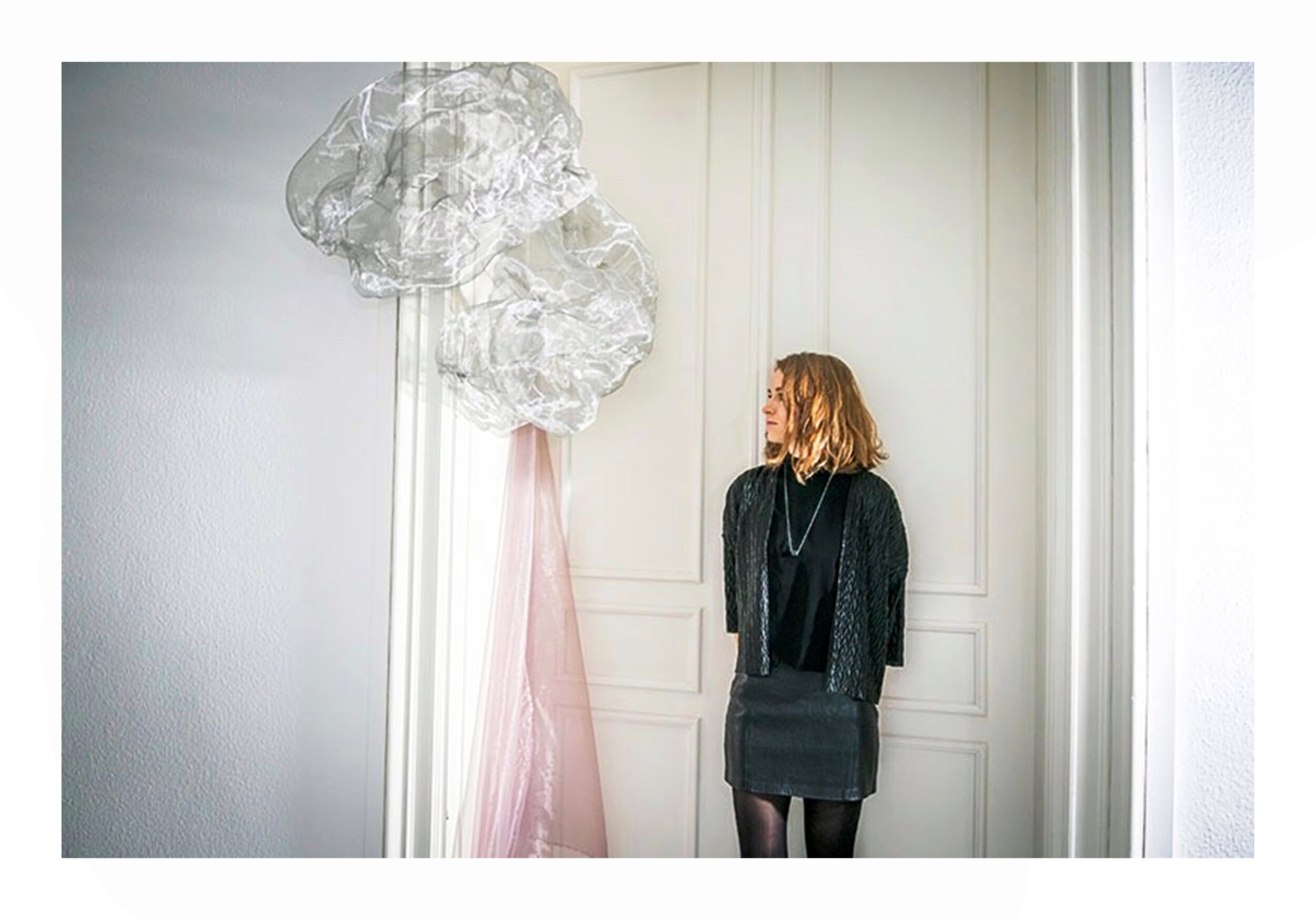NESTING – Mapping the city as an superorganism
Mars 2020, Urban Nation Museum, Berlin
The term nesting refers to how superorganisms such as ants, termites and bees construct their nests in the wild, adjusting the construction to the surrounding environment by using natural cavities or by removing material to achieve the desired shape. Creating a dynamic construction specialized to the individuals specific needs. Organisms in captivity adjust their nest to the given conditions rather than showing instinctive building behavior. If the nest is restricted in one direction, it will develop according to the designed restrictions.
Nesting is the first part of the project Mapping the city as a superorganism and explores the concept of urban housing in relation to the nesting habits of synergetically interacting organisms.
Despite efforts of modern city planning, most cities have areas with non-conforming urban housing where inhabitants claim abandoned or unused space to create living constructions integrated in the area by adapting to site specific conditions and materials.
The outcome might be less refined than housing areas planned by an external party such as city planners and architects. The resulting living conditions are produced according to a preconceived vision of the average person’s requirements and the idea of how contemporary housing should be constructed and regulated. Instead these housing areas represent a more dynamic approach to urban housing, ownership and public space.
TEXT BY DR. KEA WIENAND FOR STIFTUNG BERLINER LEBEN
“The sculptures belonging to the “Nesting” series by the Swedish artist Fanny Spång are semitransparent forms that seem to hover in the exhibition space like smoke or fog-like clouds. Depending on how the light falls, the organically shaped objects take on a silver gleam and cast soft shadows on the floors and walls. Made of fine metal mesh and with the appearance of natural phenomena, the sculptures unfold their power in the interplay between light and space. A number of these delicate objects hang from nearly invisible threads in front of a window, as if assembling there for a period of time, merging into one entity, or existing in a mode of cooperation. Another object finds its place at the doorframe, with a silky pink fabric gently falling to the ground beside it. The largest and darkest form remains on the ground, captured inside a container made out of clear, undulating polycarbonate.
Fanny Spång orients her works according to principles rooted in nature. Her objects vacillate between living and non-living matter, according to one’s perception. One could view the individual elements of her work not only as clouds of smoke or fog but also as living entities, or even animal houses, such as snail shells or cocoons. The title, “Nesting,” thus suggests how animals or humans build and occupy a nest. Through this reference, Spång’s works are like dwellings that have themselves taken up residence somewhere but nevertheless remain fragile.
For the artist it is important to emphasize that her works relate to the objective world. “Nesting” belongs to a series of works in which she deals with the city as a superorganism. In biology, a superorganism describes a multiplicity of individual organisms that form a self-regulating unit, for example ants, bees, or termites. In thinking about cities as superorganisms, Spång is interested in the interaction between inhabitants and their relationship to urban space and the biosphere as a whole. As she explains, her objects are inspired by the way people look for niches in cities designed by urban planners and architects, places that they use and interact with — like insects or other kinds of animals that adapt their nests to their surroundings, depending on the given environment and reigning living conditions. Spång’s view of urban projects and phenomena are not simply romantic or misty-eyed. The delicate construction of her nests relates to the insecurity of many urban existences or living conditions as well as the dependencies and precariousness that are inherent to every life.”.
Founding provided by Stiftung Berliner Leben.
